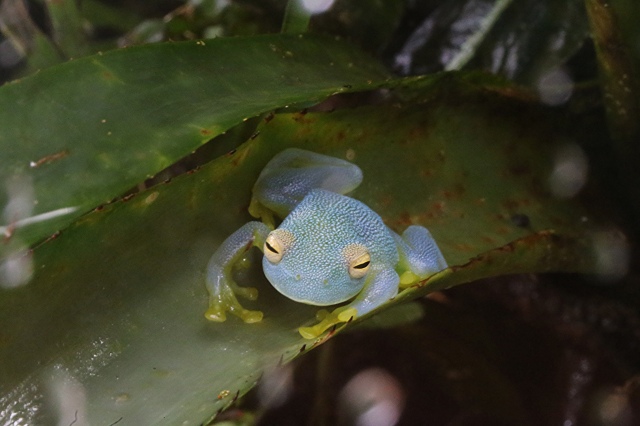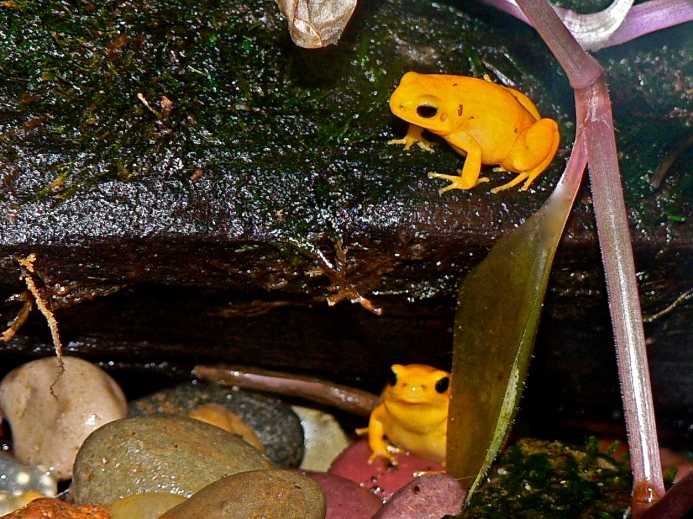TAXONOMY
Kingdom: Animalia
Phylum: Chordata
Class: Amphibia
Order: Anura (Frogs, Toads)
Family: Rhacophoridae
Genus/species: Theloderma corticale
GENERAL CHARACTERISTICS: The Vietnamese Mossy Frog are a marvel of camouflage coloration and texture. Tubercles and spines on the skin and mottled colors of green, black, and purple make the animals blend perfectly into their mossy, wooded background. They have large sticky pads on their toes and a soft underbelly.
Length 7- 8 cm (3 inches)
DISTRIBUTION/HABITAT: T. corticale are found in North Vietnam in subtropical and tropical moist lowland forests, freshwater marshes. A semi-aquatic species that spends much time in the water, hiding under rocks and floating plants. Also spends time above the water, attached to crevice or rock where it blends perfectly with its background.
Count the eyes below
DIET IN THE WILD: Nocturnal, they have a long, sticky tongue attached to the front of their mouth that they use to catch insects. Frogs has no hard palate. To swallow it pulls its eyes down into the roof of its mouth helping to push food down its throat.
ACADEMY DIET: Crickets primarily three times per week.
CONSERVATION: The World Conservation Union (IUCN) states that clear cutting forests and demand from the pet trade can potentially impact numbers.
REPRODUCTION: Eggs are laid on rocks or vegetation just above the water. After hatching, the larvae fall into the water below and metamorphose from a tadpole to a frog in about a year.
CONSERVATION:IUCN Red List: Least Concern
REMARKS: Like all tree frogs, they have adhesive toe pads that allow it to grip the undersides of slick leaves or rocks. Recent studies have shown these pads to be a sophisticated combination of mucous covered areas that provide wet adhesion and raised dry areas that provide a grip on dry surfaces. These findings have stimulated exploration into improved tire design.
They can absorb oxygen through their skin. (M Avila Academy Biologist)
Curls into a ball and “plays dead” when frightened.
Water planet, Water Dependence
References
California Academy of Sciences Steinhart Aquarium, Water Dependance 2018
Ron’s Flickr http://www.flickr.com/photos/cas_docents/sets/72157608456457315/with/5355461537/
Ron’s WordPress Shortlink http://wp.me/p1DZ4b-LI
ADW animaldiversity.org/accounts/Theloderma_corticale/classif…
IUCN Red list www.iucnredlist.org/species/59033/87476136
WAZA www.waza.org/en/zoo/pick-a-picture/theloderma-corticale
American Museum of Natural History. research.amnh.org/vz/herpetology/amphibia/Amphibia/Anura/…

























